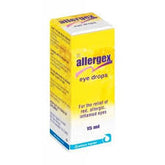Moles
Moles, also known as nevi (singular: nevus), are common skin growths that develop when pigment cells (melanocytes) grow in clusters rather than being spread evenly throughout the skin. They can appear anywhere on the body and vary in size, shape, and color. Most moles are harmless, but some may develop into skin cancer, particularly if they undergo changes in size, shape, or color.
Types of Moles
-
Congenital Moles: Present at birth and may be small or large (giant congenital nevi). Larger congenital moles have a slightly higher risk of developing into melanoma.
-
Acquired Moles: Develop after birth and can occur anywhere on the body. They typically appear during childhood and adolescence but can continue to develop throughout adulthood.
Characteristics of Moles
-
Color: Moles can range from tan to brown to black. Some may also have a reddish hue.
-
Shape: Most moles are round or oval-shaped, but they can also be irregularly shaped.
-
Texture: Moles are usually smooth and flat, but some may be raised above the skin surface.
-
Size: Moles can vary in size from small dots to larger lesions.
-
Location: Moles can appear anywhere on the skin, including the scalp, face, neck, chest, back, and limbs.
Causes
The exact cause of moles is not fully understood, but they occur when melanocytes (pigment-producing cells) grow in clusters instead of being spread evenly throughout the skin. Genetic factors and sun exposure are believed to play a role in the development of moles.
Risk Factors
Several factors may increase the risk of developing moles:
-
Family History: Individuals with a family history of moles or melanoma may have an increased risk.
-
Sun Exposure: Prolonged exposure to ultraviolet (UV) radiation from the sun or tanning beds can increase the number of moles and the risk of developing melanoma.
-
Skin Type: Fair-skinned individuals are more likely to develop moles than those with darker skin.
-
Age: Moles are more common in children and adolescents, but they can continue to develop or change throughout adulthood.
When to See a Doctor
Most moles are harmless, but it's important to monitor them regularly for any changes that may indicate skin cancer (melanoma). See a doctor if you notice any of the following changes in a mole:
-
Changes in Size, Shape, or Color: Especially if the change occurs rapidly or is accompanied by itching, bleeding, or pain.
-
Irregular Borders: Moles with irregular or uneven borders may be a sign of melanoma.
-
Asymmetry: Moles that are asymmetrical, with one half different from the other half, may be concerning.
-
Evolution: Any changes in a mole, such as growth, elevation, or new symptoms, should be evaluated by a healthcare professional.
Diagnosis and Treatment
Most moles do not require treatment unless they are causing symptoms or are suspected to be cancerous. Diagnosis of suspicious moles may involve:
-
Skin Examination: A dermatologist will visually inspect the mole and may use a dermatoscope (a handheld device with magnification and light) to examine it more closely.
-
Biopsy: If a mole is suspected to be cancerous, a sample of tissue may be removed and examined under a microscope to determine if cancer cells are present.
Prevention
To prevent the development of new moles and reduce the risk of melanoma:
-
Sun Protection: Limit sun exposure, especially during peak hours, and use sunscreen with a high SPF.
-
Protective Clothing: Wear hats, sunglasses, and clothing that covers the skin when outdoors.
-
Regular Skin Checks: Perform regular self-examinations of the skin to monitor for any changes in moles or the appearance of new moles.
-
Avoid Tanning Beds: Avoid using tanning beds, as they emit harmful UV radiation that can increase the risk of melanoma.
Conclusion
Moles are common skin growths that are usually harmless but may develop into skin cancer (melanoma) in some cases. Monitoring moles for changes in size, shape, color, or symptoms is important for early detection and treatment of skin cancer. Practicing sun safety and protecting the skin from UV radiation can help prevent the development of new moles and reduce the risk of melanoma. If you have concerns about a mole, consult a healthcare professional for evaluation and advice.
- Complication of Moles
- Diagnosis of Moles
- How is Moles treated?
- Medicine for Moles
- Moles
- Moles myths
- Remedies for Moles
- Support for Moles
- Symptoms associated with Moles
- The best British Online Pharmacy
- Top 10 UK Pharmacies
- Treatment for Moles
- What causes Moles
- What is Moles
- Where can I buy medicine for Moles in the UK
- ZimSeller Pharmacy



















